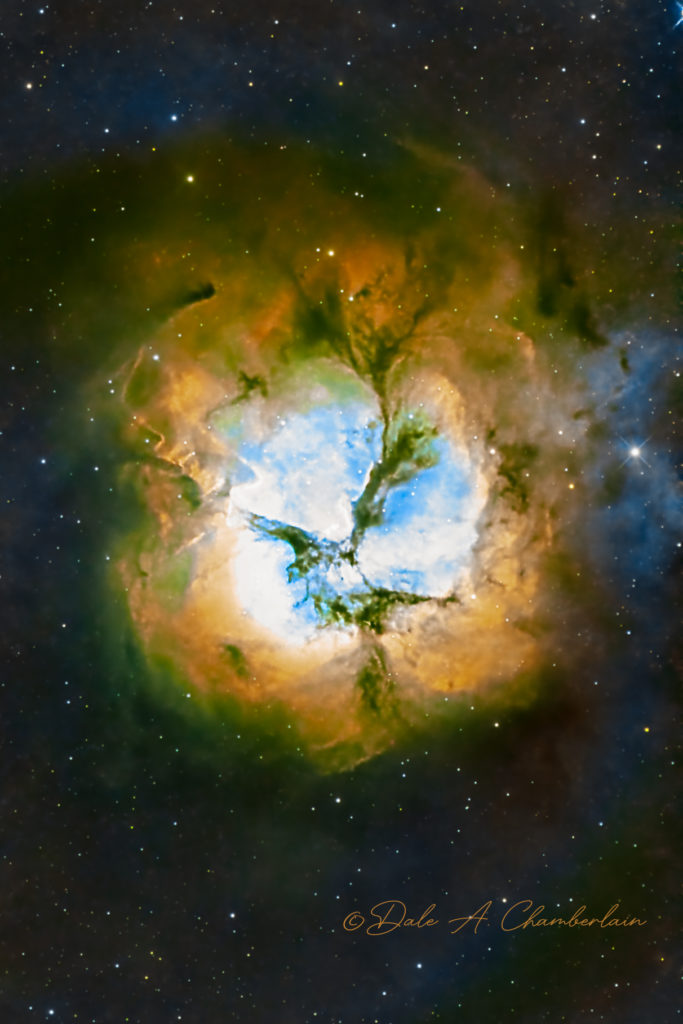
Object: Messier 20 (M20), also known as the Trifid Nebula, is a famous star-forming region located in the constellation Sagittarius.
The nebula’s designation in the New General Catalogue is NGC 6514. The name Trifid refers to its three-lobed appearance. Messier 20 consists of several different objects: an emission nebula, a reflection nebula, a dark nebula and an open star cluster.
The dark nebula, catalogued as Barnard 85, consists of dust clouds that absorb and block light from the bright objects behind them. It is responsible for the apparent gaps in the larger emission nebula that give M20 its trifurcated look.
The other two types of nebulae – emission and reflection – make M20 glow in different colors in images.
Messier 20 is a popular target for amateur astronomers as it is quite bright, even when seen through a small telescope. It has an apparent magnitude of 6.3 and lies at an approximate distance of 5,200 light years from Earth. M20 has a linear diameter of over 40 light years and is only 300,000 years old.
Taken: August 18, 2019
Telescope: Astro-Tech 14” RC with f/5.2 focal reducer. (1850 mm focal length)
Mount: Paramount ME II unguided
Camera: ZWO ASI1600MM-Pro (cooled to -15C; unity gain) Bin 2×2.
Focuser: Moonlite Nitecrawler
Filters used: H-a, O-III and S-II narrowband on a ZWO 8 position filter wheel
Exposures: 25×100 sec H-a; 25×100 sec O-III and 25×100 sec S-II, for a total exposure time of 2.08 hours; calibrated with 25 dark frames, 32 flat frames with 32 dark-flats
Seeing Conditions: A little below average. Bortle 5 region. A lot of humidity!
Processed with PixInsight and Photoshop CC 2019